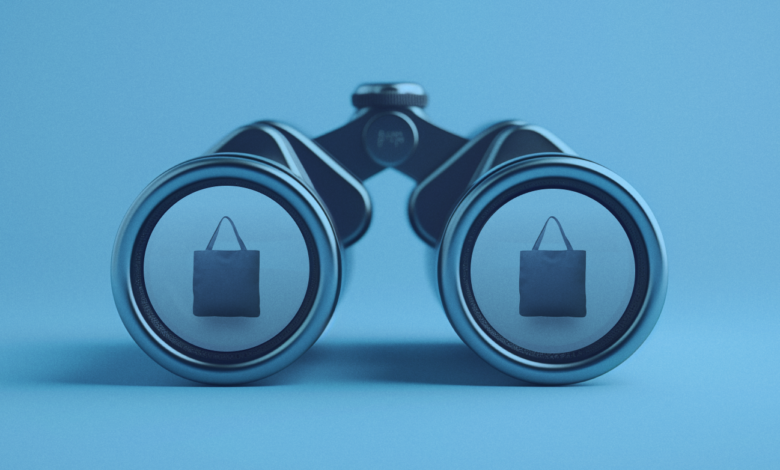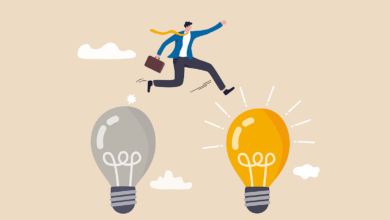What Is Product Discovery? How To Leverage It for Success (2024)

As an entrepreneur you may sell a high quality product. Yet it doesn’t matter how well your product is made if no one is interested in buying it. It makes sense to learn about your audience before you go through the effort of making something, whether it’s a steak dinner or the next big social media app.
Basic product discovery efforts could prevent your product failing in the marketplace. Here’s what you need to know about product discovery so you can ensure your product meets customer needs.
What is product discovery?
Product discovery is the process of researching user behavior and analyzing the market to assess the viability of products. This practice is based on the idea that user experience and customer needs should inspire your product vision.
For most startups, the product development process starts with ideation and brainstorming. Product discovery then kicks off after the team develops a product concept. During this phase, the focus shifts from ideating to researching consumer behaviors to determine if the product meets a market need. Teams employ various research methods to evaluate the product’s potential value to users.
Discovery activities aim to deepen understanding of the product’s target audience. This process often involves conducting customer interviews and gathering user feedback to create a portrait of consumer concerns and desires.
Discovery work can be spearheaded by product management or led by a cross-functional team including product managers, software engineers, and designers.Product developers and managers leverage the insights from this phase to develop the product roadmap.
A brief history of product discovery
Here’s a brief overview of how product discovery came to be a common practice:
Introduction in the 1990s
Digital products began to enter the market en masse in the 1990s. These early offerings were all about innovation; developers and engineers made product decisions based on the technology available at the time.
As digital technology became more widely adopted, the tech industry began to shift toward user-centered design. The idea was put forward by Donald Norman in his 1986 book,User Centered System Design: New Perspectives on Human-Computer Interaction.
In his writing, Norman proposed a customer-centric approach to the product development process. He suggested the most effective way to create business value is to let real user problems inform your design thinking.
In 1993, Norman became the first user experience director at Apple, where he began incorporating customer research and feedback into the product strategy. The success of his products demonstrated the market power of user insights.
Refinement in the early 2000s
In 2001, a team of technologists developed agile methodology, a product management philosophy for digital products. Agile practices emphasize the importance of continuous testing and integration of user feedback. This development framework gained popularity as a way to move quickly while retaining a focus on customer satisfaction.
Implications for product discovery today
The fundamental principles of research and testing remain essential in the product discovery process. Since the development of the agile method, a proliferation of new technologies has provided developers with access to more data than ever before. The product discovery process now includes modern tools and databases such as AI-powered A/B testing and machine learning technology.
Product discovery process
Discovery is not a fixed process. Most teams include research, but companies may use different techniques or develop their own product discovery process. While methods may vary, the overall goal remains: Develop a deep understanding of user needs, spot market opportunities, and identify product solutions to serve the customer.
To accomplish these goals, the discovery typically follows this structure:
1. Research and data collection
Research is the backbone of product discovery. This phase is focused on collecting user stories and market data. Conduct user research by administering customer interviews, running surveys, and hosting focus groups. The goal is to gain a deep understanding of the customer’s pain points and identify needs that aren’t being met by current products on the market.
You can also conduct market research during this stage. Market research includes competitor research, trend analysis, and market forecasting. The following phases of product discovery are built on the data collected during this stage.&
2. Analysis
Synthesizing your research helps turn data into valuable insights. Analysts often start by looking for patterns and themes. If multiple users voiced the same concern or desire, it may indicate a gap in the market. By addressing the gap, your team can create a strong product-market fit.
Teams may also use visualization techniques like persona development and customer journey mapping to help them interpret the data:
- Personas. Buyer persona development involves imagining a fictional customer to represent your target audience and the product from their perspective.
- Customer journey maps. A customer journey map is a visual tool depicting every aspect of a user’s interaction with your product, with personas as the basis for imagining these interactions.
The analysis phase may also include a touch base with internal stakeholders, such as product managers and sales reps. Conducting interviews with product leadership can offer insight into any internal limitations or non-negotiable features needed to support company goals.
3. Decisions and development
This stage uses insights gained during research and analysis to make concrete decisions about product direction. The product development team uses their understanding of customer problems and desires to propose potential solutions.
Product managers are also responsible for selecting which feature ideas are implemented and outlining the basic requirements needed for launch (also known as the minimum viable product). To make these decisions, they may consider feasibility, team bandwidth, customer impact, and alignment with business goals.
Once they’ve determined the best path forward, the team builds a product roadmap and begin to create product prototypes.
4. Iteration
The final phase of the discovery process focuses on refining products. At this stage, your team has a working prototype or demo of your new product.
Using this demo to conduct user testing can provide valuable feedback on product performance. Incorporating these user insights can help make your product even better.
The iteration process can continue even after the product has launched. Many brands practice continuous discovery by regularly asking for feedback and addressing new issues.
Product discovery FAQ
What are some product discovery methods?
Product discovery is an early phase of product development focused on understanding customer needs and providing digital solutions based on research and data. Popular research methods include user interviews,customerjourney mapping, and usability testing.
What is product ideation vs product discovery?
Product ideation is about big-picture brainstorming—this is a creative phase focused on idea generation and concept development. Product discovery comes after ideation. This is a more analytical process using research and data to determine if the products suggested during ideation are on the right track.
What comes after product discovery?
After product discovery teams may move on to concrete stages of development such as product road mapping, design, and product delivery. Companies may continue to practice discovery tactics during development by asking for customer feedback and conducting prototype tests. Developing a continuous discovery practice helps product organizations validate their ideas as they refine their product and implement new features.



